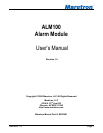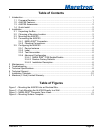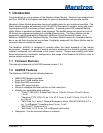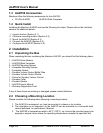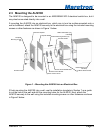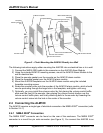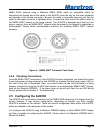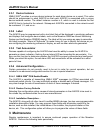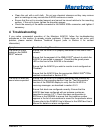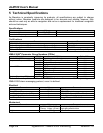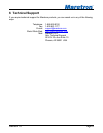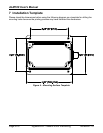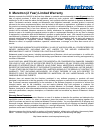
Revision 1.0 Page 7
®®
• Clean the unit with a soft cloth. Do not use chemical cleaners as they may remove
paint or markings or may corrode the ALM100 enclosure or seals.
• Ensure that the unit is mounted securely and cannot be moved relative to the mounting
surface. If the unit is loose, tighten the mounting screws.
• Check the security of the cable connected to the NMEA 2000
®
connector, and tighten if
necessary.
4 Troubleshooting
If you notice unexpected operation of the Maretron ALM100, follow the troubleshooting
procedures in this section to remedy simple problems. If these steps do not solve your
problem, please contact Maretron Technical Support (refer to Section 6 for contact
information).
Symptom Troubleshooting Procedure
The ALM100 is not
visible on the NMEA
2000
®
network.
Ensure that the ALM100 is properly connected to the NMEA 2000
®
network.
Ensure that the segment of the NMEA 2000
®
network to which the
ALM100 is connected is powered. Check that the greed power
LED on the front of the ALM100 is illuminated.
Ensure that the ALM100 you wish to monitor is not configured as
“Disabled”.
Ensure that the ALM100 has the appropriate NMEA 2000
®
PGNs
enabled as described in Section 2.5.5.
The ALM100 does not
sound when expected.
Ensure that the ALM100 is properly connected and powered as
described in the preceding section. Use the “Test Annunciator”
function of the DSM250 display to verify that the ALM100 is
receiving messages, as described in section 2.5.3.
Ensure that alerts are configured correctly. Ensure that the
ALM100 has been configured with an instance number as
described in section 2.5.1. Check the alarm configuration in
N2KView or the DSM250 to ensure that this instance number
appears in the list of annunciators to sound for the particular alarm.
Please refer to the DSM250 User’s Manual or the N2KView User’s
Manual for details on alarm configuration.



